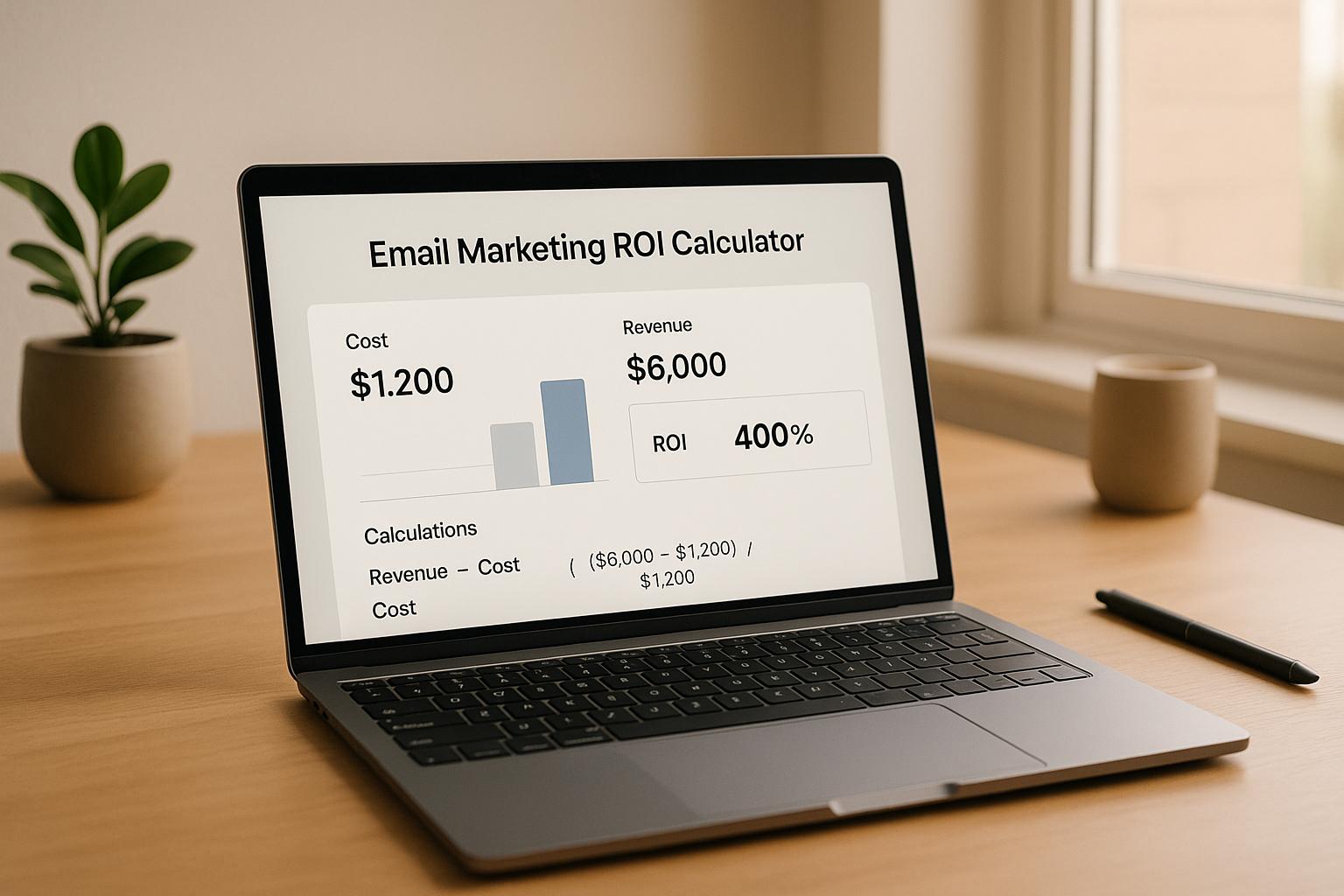Newsletter API integrations simplify email marketing by automating tasks, syncing data, and improving personalization. Whether you're managing a small newsletter or enterprise campaigns, APIs can save time and enhance efficiency. Here's what you need to know:
- What They Do: Newsletter APIs connect your email platform with other tools to automate workflows (e.g., sending welcome emails or updating subscriber lists).
- Key Benefits: Real-time data updates, reduced manual work, better personalization, and scalability for growing campaigns.
- Who Should Use Them: Ideal for business owners, marketers, and content creators looking to streamline email operations.
- How They Work: APIs use formats like JSON and methods like GET/POST for data exchange. You can choose between direct API calls for customization or SDKs for simplicity.
- Getting Started: Select a platform with strong documentation, generate API credentials, and test your setup before full integration.
Quick Tip: Use webhooks for real-time updates and caching to optimize performance. Secure your API keys and monitor usage to avoid issues like rate limits or data sync errors.
APIs are a powerful tool for managing subscribers, automating campaigns, and integrating analytics - helping you scale and secure your email marketing efforts efficiently.
Newsletter API key: How to use an API token in email marketing
API Basics
Learn the essentials of newsletter APIs to streamline your integration process.
Common API Terms
- Endpoints: The URLs where API requests are sent and responses are received.
- API Keys: Unique codes used to authenticate and authorize access.
- OAuth: A secure protocol that grants access to data without sharing passwords.
- Webhooks: Notifications triggered by specific events, like when someone subscribes or unsubscribes.
- Rate Limits: Rules that limit the number of API requests allowed within a set timeframe, such as per minute or hour.
How APIs Handle Data
APIs use standardized formats like JSON, XML, or CSV to process data. They communicate via RESTful HTTP methods, including GET, POST, PUT, and DELETE.
API Calls vs. SDK Usage
When integrating newsletter features, you can choose between direct API calls or SDKs (Software Development Kits). Here's a quick comparison:
| Feature | Direct API Calls | SDK Usage |
|---|---|---|
| Setup Time | Longer initial setup | Faster implementation |
| Flexibility | Full control over features | Limited to SDK's built-in tools |
| Maintenance | Requires manual updates | Updates handled automatically |
| Ease of Use | More complex | Simpler, beginner-friendly |
| Performance | Better for custom needs | Optimized for standard tasks |
Direct API calls allow for maximum customization but demand more technical expertise. SDKs, on the other hand, simplify the process with pre-built functions, though they might restrict advanced configurations.
Example: Fetching Subscriber Data
Using a direct API call:
GET /api/v1/subscribers
Authorization: Bearer your_api_key
Using an SDK:
newsletter.getSubscribers({
limit: 100,
status: 'active'
});
Choose direct API calls if you need complete control, or go with SDKs for a quicker and easier setup. Check out the next section for detailed implementation steps.
Setup Guide
Platform Selection
When picking a newsletter platform, consider these key factors:
- API Documentation Quality: Look for clear, detailed documentation with examples.
- API Version Support: Ensure the platform supports its API versions for the long term.
- Rate Limits: Check if the platform's limits align with your usage needs.
- Authentication Methods: Confirm support for secure authentication like OAuth 2.0.
- Available Endpoints: Make sure the API covers all the features you require.
| Feature | Key Considerations |
|---|---|
| Documentation | Look for SDKs, interactive examples, and error clarity. |
| Support | Ensure active developer forums and dedicated support. |
| Security | OAuth 2.0, API key management, HTTPS enforcement. |
| Performance | High uptime and reasonable rate limits. |
| Integration Tools | Check for pre-built libraries and webhook support. |
Setup Steps
1. Generate API Credentials
Start by creating API credentials in the platform's dashboard:
- Generate an API key.
- Set access permissions based on your needs.
- Restrict access to specific domains or IPs for security.
2. Configure Environment
Set up your development environment. Use environment variables to keep sensitive data secure:
# Example of environment variables
NEWSLETTER_API_KEY=your_api_key_here
NEWSLETTER_API_SECRET=your_api_secret_here
API_ENDPOINT=https://api.newsletter-platform.com/v1
3. Test Connection
Test your configuration with a simple API call to ensure everything works as expected:
// Example API connection test
const response = await fetch(`${API_ENDPOINT}/ping`, {
headers: {
'Authorization': `Bearer ${NEWSLETTER_API_KEY}`,
'Content-Type': 'application/json'
}
});
If there are issues, troubleshoot them before proceeding to full integration.
Problem Solving
Here are solutions for common issues you might encounter:
Authentication Errors
- Double-check the API key format.
- Ensure the key is active and hasn’t expired.
- Verify your request headers are correctly formatted.
Rate Limiting
- Use exponential backoff to handle rate limits.
- Cache responses to reduce unnecessary requests.
- Opt for bulk operations when supported.
Data Sync Issues
- Use webhooks for real-time updates.
- Implement retry logic for failed API calls.
- Log all interactions to aid debugging.
Error Handling Best Practices
Handle errors gracefully in your application. For example:
try {
const response = await newsletterAPI.subscribe(userData);
if (!response.ok) {
throw new Error(`API Error: ${response.status}`);
}
} catch (error) {
console.error('Subscription failed:', error);
// Add retry logic or fallback mechanisms here
}
sbb-itb-2653e19
API Applications
Common Uses
Newsletter APIs simplify tasks and streamline data management in several ways:
-
Subscriber Management
Keep your subscriber lists up-to-date with real-time synchronization, automated tagging, and segmentation. You can also create custom forms with double opt-in workflows for added efficiency. -
Campaign Automation
Automate email sequences triggered by specific actions, test content with A/B testing, insert dynamic content, and schedule campaigns to deliver at optimal times across different time zones. -
Analytics Integration
Build custom dashboards, track engagement, calculate ROI, and set up automated alerts to monitor performance metrics.
Once you’ve mastered these uses, focus on securing your integration to ensure smooth scalability.
Security and Scale
To handle growth effectively, prioritize secure and scalable API integrations. Here’s how:
-
API Key Management
Store keys securely in environment variables, rotate them every 90 days, and use separate keys for development and production environments. Add an extra layer of security by implementing IP whitelisting. -
Performance Optimization
Use caching for frequently accessed data, batch operations for efficiency, and monitor API usage closely. Set up automated scaling triggers to handle increased demand.
For more details, check the Setup Guide, which covers API rate limits and retry logic.
With security and performance in place, you can explore various integration methods to further refine your workflows.
Integration Methods
Here are some common ways to integrate newsletter APIs:
-
Direct API Integration
Build custom solutions tailored to your needs. This method gives you full control over functionality and is perfect for complex workflows. -
SDK Implementation
Speed up development by using pre-built libraries designed to work with the API. -
Webhook Integration
Create real-time, event-driven workflows that respond dynamically to subscriber actions. -
No-Code Tools
For simpler integrations, use no-code platforms to connect APIs without any programming knowledge.
Choose the method that best fits your technical capabilities and workflow requirements.
API Management
Regular Updates
To keep your newsletter API integrations running smoothly, focus on consistent monitoring and updates:
Version Control
- Track API versions and test updates in a staging environment.
- Automate deprecation notifications to stay ahead of changes.
- Keep your implementation documentation up to date.
Access Management
- Review and update access permissions every three months.
- Rotate API credentials on a quarterly basis.
- Monitor usage patterns and set up alerts for any unusual activity.
Performance Monitoring
- Keep an eye on response times and error rates.
- Monitor your API quota usage to avoid overages.
- Plan capacity based on usage trends.
- Run health checks every five minutes to catch issues early.
These steps help maintain the integration methods discussed earlier.
Fix Common Issues
Proper management reduces downtime and ensures quick troubleshooting. Use this guide to address common API issues:
| Issue | Common Causes | Solution |
|---|---|---|
| Rate Limiting | Quota exceeded | - Add backoff logic - Cache data - Batch requests |
| Authentication | Invalid credentials | - Verify key status - Check IP whitelist - Confirm key storage |
| Timeouts | Network/request issues | - Adjust timeout settings - Reduce payload size - Use pagination |
| Data Sync | Race conditions | - Add retry logic - Validate webhooks - Use idempotency |
| SSL/TLS | Protocol mismatch | - Update certificates - Verify TLS version - Check domains |
Tips to Prevent Issues:
- Keep detailed error logs for easier debugging.
- Monitor your most critical endpoints regularly.
- Set up fallback mechanisms to handle failures.
- Document all configuration changes for future reference.
Conclusion
Here's a quick overview of the key points and steps to take from our detailed setup and management guides.
Key Takeaways
Newsletter API integrations are a powerful tool for streamlining business communications. Here's what you should remember:
-
Technical Essentials
APIs connect your business systems with newsletter platforms, making integration smooth and efficient. Regular monitoring and updates are crucial to maintaining performance. -
Business Benefits
Automating workflows saves time, while personalized content increases engagement. Use analytics to guide decisions and ensure your infrastructure can handle growth. -
Management Tips
Set up a process for regular API updates and troubleshooting to avoid downtime and ensure everything runs smoothly.
Use these insights to refine and strengthen your integration approach.
Steps to Get Started
-
Choose the Right Platform
Pick a newsletter platform that fits your technical needs and business goals. Look at API documentation, support options, and integration features. -
Prepare Technically
Make sure your team understands key concepts like RESTful APIs, authentication methods, rate limits, and error handling. -
Plan Your Implementation
Roll out the integration in stages:- Start with basic subscriber management.
- Add automation features over time.
- Test everything in a staging environment.
- Keep an eye on performance metrics.
- Scale up as your needs grow.


